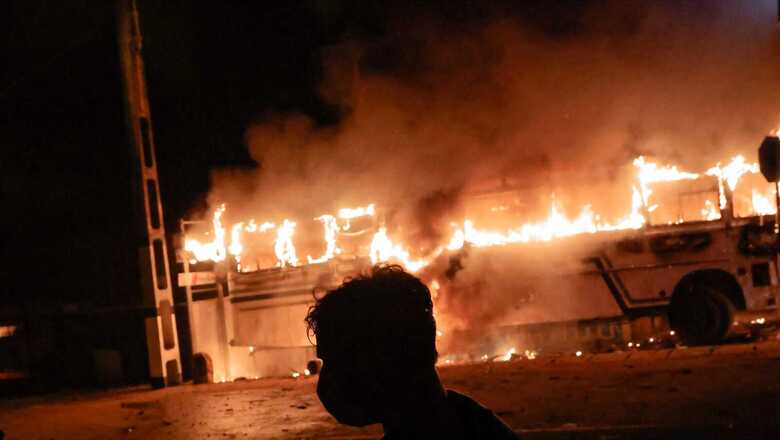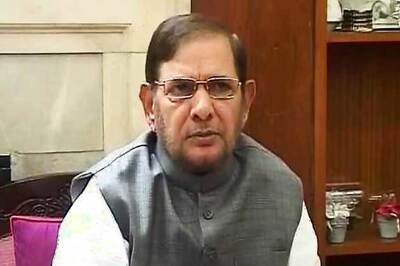
views
More than 40 people were arrested and one person was critically injured late on Thursday when protesters staged a demonstration outside the home of Sri Lankan president Gotabaya Rajapaksa. Protesters also set ablaze a bus parked outside the president’s house in the locality of Mirihana in Colombo.
Pictures shared by Lankan news agency Daily Mirror showed several hundreds of protesters staying put near the president’s residence at Pengiriwatte Road. The photos showed most protesters holding placards. Some protesters also brought their children along. A report by the Daily Mirror said that the protest is yet to be brought under control.
A report by Reuters also said that Colombo police imposed an overnight curfew following the protests. Amal Edirimanne, senior police official, told the news agency that four police divisions of Colombo – Colombo North, South, Colombo Central, Nugegoda, Mount Lavinia and Kelaniya – were under a curfew. Local news outlets quoting Colombo police spokesperson Nihal Thalduwa said that the curfew was lifted on Friday morning.
The protests come in the aftermath of the government’s handling of the country’s crippling economic crisis over which several experts have divergent views. Some attribute it to the Chinese debt trap but Sri Lankan commentators point the finger towards economic mismanagement and reluctance to bring reforms to the Sri Lankan economy as prime causes of the recent outpouring of anger towards the Rajapaksa government.
A report by news agency Foreign Policy said that Sri Lanka was reluctant to approach the International Monetary Fund (IMF) in fears that they may have to implement the economic reforms suggested by the UN agency. The reluctance was a major reason why Sri Lanka chose to refinance its loans from China and ask India for help. However, on Thursday, IMF spokesperson Gerry Rice said that they will initiate discussions with Sri Lankan authorities on a possible loan program in coming days, according to news agency Reuters.
According to reports, a 70% drop in foreign exchange reserves since January 2020 has left Sri Lanka facing an economic crisis which in turn is causing civil unrest in the island nation. Ahilan Kadirgamar, a senior lecturer at the University of Jaffna, while speaking to news agency Himal Southasian said that the economy is crisis-prone since ‘liberalisation in the late 1970s’ and drew connections to the present crisis to the civil war that ravaged Sri Lanka for more than two decades. He says that setting the economy in a neoliberal trajectory under the rule of the JR Jayawardena government in the late 70s, when workers’ unions were attacked and tens of thousands of workers were thrown out of work also paved the way for the current crisis.
Read the Latest News and Breaking News here




















Comments
0 comment